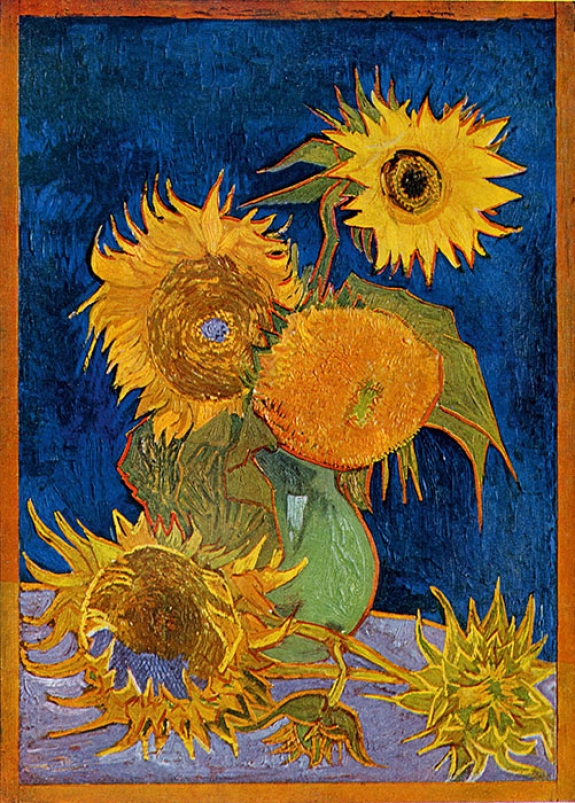A rare early color image of Vincent Van Gogh’s Six Sunflowers was recently located in Japan and reveals that Van Gogh had created a bold orange frame for the still life. The original framed painting, which was part of a private Japanese collection, was destroyed in an American bombing raid during World War II.
The image is part of an extremely rare portfolio produced in Tokyo in 1921 and has been reproduced in The Sunflowers are Mine: The Story of Van Gogh’s Masterpiece by the Van Gogh expert, Martin Bailey. The image is significant because it reveals that Van Gogh had intended to present his Six Sunflowers in a dramatic way – the bright orange sharply contrasting with the painting’s blue background. This framing technique would have been revolutionary in 1888 as pictures were traditionally hung in gilt frames or in the case of very modern works, white frames.
Van Gogh painted four pictures of sunflowers in 1888 with three, six, fourteen and fifteen blooms. The last two paintings are among some of the best-known artworks in the world and are housed in Munich’s Neue Pinakothek and London’s National Gallery, respectively. Three Sunflowers is currently part of a private collection and has not been exhibited in living memory.
